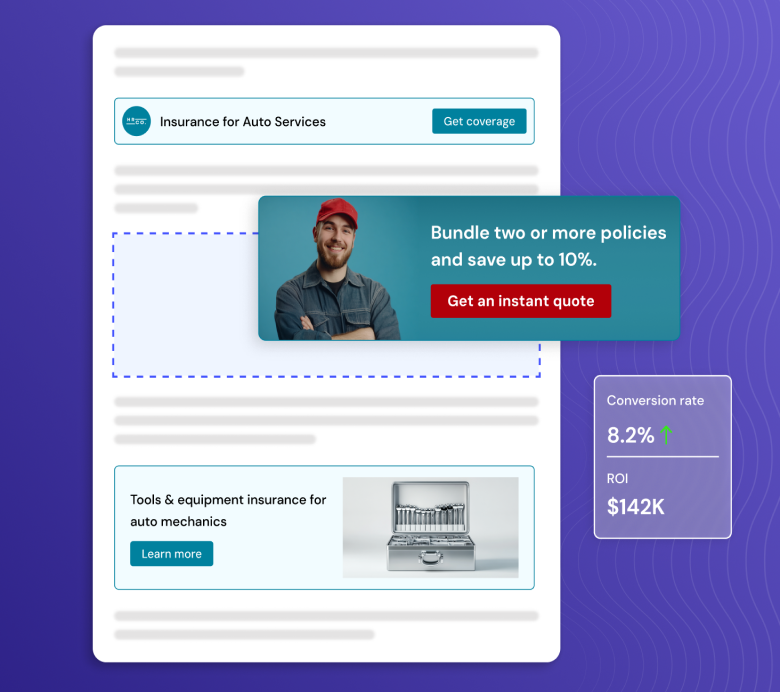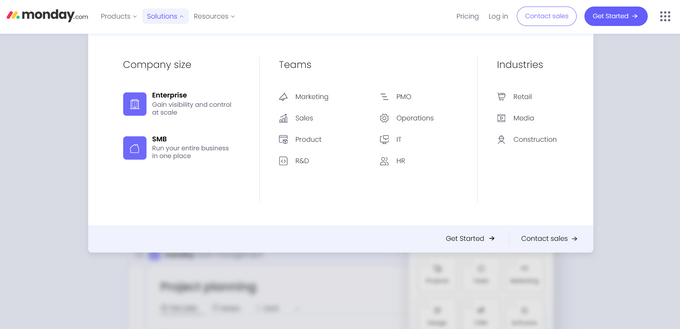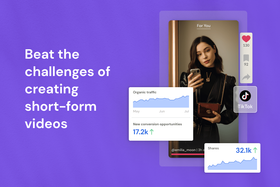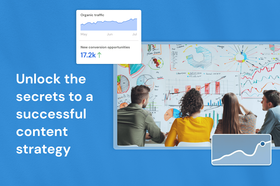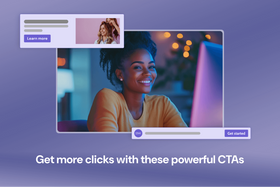Middle-of-the-funnel marketing: How to nurture leads with valuable content
Find out how high-quality content in the middle of the funnel helps convert leads into loyal customers.
Updated May 16, 2025

Middle-of-the-funnel marketing is often overlooked, but it’s a crucial part of the content marketing funnel. At this stage, potential customers are actively considering your brand, evaluating whether it aligns with their needs, and looking for reasons to move forward. Done right, middle-of-the-funnel marketing meets these prospects where they are, providing the resources and insights they need to see your brand as the solution they’re searching for.
Key takeaways
- Middle-of-the-funnel marketing targets leads who are aware of your brand and actively considering their options.
- The middle of the funnel is the bridge between the top and bottom of the funnel that guides users closer to conversion.
- By creating content that addresses users' objections, builds trust, and supports the user journey, you can nurture leads effectively and guide them further down the funnel.
What is the middle-of-the-funnel marketing?
Middle-of-the-funnel (MOFU) marketing happens at the consideration stage of the user journey, where potential customers or leads have passed the awareness phase and are now evaluating their options for solving a problem or meeting a need. At this point, they’re comparing products, seeking information, and narrowing down their choices.
MOFU marketing focuses on delivering valuable, relevant content that highlights your product’s strengths and addresses common concerns or objections. The goal is to build trust and provide the clarity they need to progress to the bottom of the funnel, where they can confidently make a purchase decision.
Common types of MOFU content include:
- Blog posts and guides
- Product demos and tutorials
- Product reviews and comparisons
- Case studies
- Email campaigns
- Webinars
» Create an SEO marketing funnel that guides users to conversion.
Mid-funnel vs. top and bottom-of-the-funnel marketing
The main difference between MOFU marketing and the top and bottom of the funnel lies in the user's goals. Top-of-the-funnel marketing is focused on generating awareness and attracting new leads, often through educational or entertaining content that introduces people to your brand. On the other hand, bottom-of-the-funnel marketing targets leads who are ready to make a purchase and aims to convert them into customers.
MOFU marketing is the bridge between these two stages, helping guide users from one stage to the next. It plays a crucial role in engaging leads who already know your brand but need more information and assurance before converting.
READ MORE: The 5 stages of the marketing funnel explained
How to create content for middle-of-the-funnel marketing
When creating content for any stage of the funnel, you need a solid strategy. Here are a few content editing and creation tips you can use for the middle of the funnel.
» Learn how to conduct a content audit to boost SEO.
Analyze users' pain points and objections
Identify any objections or concerns users may have in the middle of the funnel. Address these objections with clear explanations, social proof, or comparisons that demonstrate the value of your product.
Each piece of content should align with where users are in the consideration process and help them move down the funnel with supportive touchpoints that ease their concerns and reinforce your brand as the right choice.
» Discover how to create content that converts.
Personalize your message
Tailor your messaging to resonate with specific audience segments and their needs. If your product serves multiple purposes, customizing your mid-funnel content to reflect specific use cases or industries helps users see it as the perfect solution. Highlight features or benefits that speak directly to the challenges of each audience segment so they feel the product is uniquely suited to them.
For example, Monday.com divides their value proposition into different use cases and builds pages for each. By creating content to match each group’s goals, they can create more relevant and engaging content, which ultimately drives more conversions.
» Guide users down the funnel with these conversion strategies.
Support the user journey
Create content that guides users further down the funnel by providing the information they need at each stage of their journey. Middle-of-the-funnel content should meet users where they are—addressing their specific questions and concerns—while gradually moving them closer to a buying decision. Each piece of content should build on previous touchpoints to lead users torward conversion.
Use social proof
Use social proof to build trust and help users feel they’re not alone in considering your product—or, if fitting, to emphasize your product’s innovative edge so they feel part of something new. Tailor your value proposition to the middle of the funnel: first, address their questions, then introduce relevant solutions, and finally, let them know how your product meets their needs. This might include using a free demo, product video, or customer success story to support them in their decision-making process.
» Optimize the user journey to increase conversions.
Link from mid-funnel content to bottom-of-the-funnel pages
At Entail, we always recommend targeting your bottom-of-the-funnel keywords first (it's one of the best ways to maximize SEO ROI). Once you've done that, you need to create middle-of-the-funnel content that supports and links to your bottom-of-the-funnel pages. That way, you add SEO juice and send more traffic to those bottom-funnel pages, which can increase conversions.
» Discover the best ways to drive organic traffic.
Add highly relevant calls to action (CTAs)
You want to send users to the next step based on their intent, especially in the middle of the funnel, where effective content and CTAs can encourage them to move down the funnel. If generating leads and conversions is your goal, strategically placing CTAs across all your content pages—including upper- and mid-funnel content—can help you capitalize on pages with a lot of traffic where users often start their journey. Without CTAs on these pages, you risk missing out on tons of conversion opportunities.
So, make sure each piece of content includes multiple contextually relevant CTAs or links. When CTAs closely match the content and user intent, click-through rates can exceed 45%.
Mid-funnel marketing metrics and KPIs to track
In the middle of the funnel, tracking your performance is key to understanding how effectively your content nurtures users and moves them closer to conversion.
The main metrics to focus on in middle-of-the-funnel marketing include:
- Conversion rate: The percentage of visitors who take a desired action, such as signing up for a newsletter or downloading a resource. This metric indicates how well your mid-funnel content guides users to conversion.
- Click-through rate (CTR): The percentage of users who click on links or elements within your MOFU content. This metric shows how well your CTAs drive users to the next stage of the funnel.
- Time on page: The average time users spend on your mid-funnel pages, revealing the content’s ability to engage users.
- Engagement rate: Measures user interactions with your content, such as video views, downloads, or social shares. A strong engagement rate signals that your MOFU content resonates with users and is relevant to their needs.
- Lead quality: Assesses the relevance of leads generated from MOFU content. High-quality leads from this stage are more likely to convert in the bottom of the funnel, which helps optimize resources spent on lead nurturing.
- Cost per acquisition (CPA): The cost to acquire a lead from MOFU content. A lower CPA indicates that your efforts are cost-effective and contribute postively to your overall content marketing ROI.
- Customer lifetime value (CLV): Projects the total revenue a customer will generate over their entire relationship with your brand.
» Learn which metrics to track at each stage of the funnel.
Get your leads to the finish line
As leads move through the middle of the funnel, focus on connecting with them through helpful content, insightful comparisons, and genuine value. This stage is critical for building trust and setting the stage for conversion. So, use this time to highlight the specific benefits of your offerings, answer key questions, and position your brand as the best option. Effective middle-of-the-funnel content builds lasting interest that primes leads for decision-making.
» Learn how to generate leads as a B2B.
